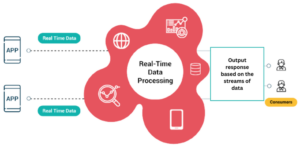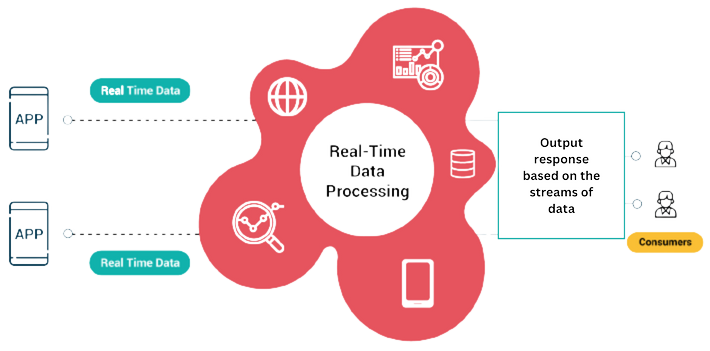Stream processing is a method of processing real-time data as it’s generated. It’s a continuous and real-time process that involves ingesting, processing, and analyzing data as it’s produced. Stream processing can help businesses gain insights and take action in real-time, making it a powerful tool for decision-making.
In today’s fast-paced digital world, businesses are producing vast amounts of data in real-time. As a result, it has become increasingly crucial for companies to leverage the power of real-time data processing to gain insights and make informed decisions. Stream processing is one of the most popular methods of real-time data processing, and in this post, we’ll explore the benefits and best practices of stream processing.
What is Stream Processing?
Stream processing is a method of processing real-time data as it’s generated. It’s a continuous and real-time process that involves ingesting, processing, and analyzing data as it’s producing. It can help businesses gain insights and take action in real time, making it a powerful tool for decision-making.

Benefits of Stream Processing
It offers several benefits that make it an attractive option for businesses that want to gain insights from their data. Here are some of the most significant benefits:
- Real-Time Insights: It allows businesses to gain insights in real-time. This means that businesses can act on data as it’s generating, rather than waiting for batch processing to occur.
- Faster Response Times: It enables businesses to respond to data events in real time, which can help them make informed decisions quickly.
- Improved Accuracy: With stream processing, businesses can detect and react to anomalies and errors as they happen, leading to more accurate results.
- Scalability: It is highly scalable, allowing businesses to process large volumes of data in real-time.
Best Practices for Stream Processing
To get the most out of stream processing, businesses should follow some best practices. Here are some of the most important best practices:
- Use a Distributed System: It requires a distributed system to handle the large volumes of data being processed. A distributed system can scale horizontally, allowing businesses to handle large volumes of data with ease.
- Plan for Failure: In stream processing, data can be lost due to system failures. Therefore, it’s essential to plan for failure by using fault-tolerant systems and storing data redundantly.
- Choose the Right Tool for the Job: There are several frameworks available, and it’s essential to choose the right one for your business’s needs. Some popular frameworks include Apache Kafka, Apache Flink, and Apache Spark Streaming.
- Optimize Data Processing: It can be resource-intensive, and it’s essential to optimize data processing to reduce latency and improve performance. This can do by using compression, filtering, and data partitioning.
Real-World Applications
Stream processing has several real-world applications, and businesses are using it to gain insights and make informed decisions. Here are some of the most common applications:
- Fraud Detection: It can be used to detect fraudulent transactions in real-time, allowing businesses to take action immediately.
- IoT Analytics: It can be used to analyze data from IoT devices in real-time, allowing businesses to gain insights and optimize performance.
- E-commerce: It can be used to analyze customer behavior in real-time, allowing businesses to offer personalized recommendations and optimize their sales strategies.
Challenges of Stream Processing
Stream processing comes with some challenges that businesses need to be aware of. Here are some of the most significant challenges:
- Complexity: It can be complex, and it’s essential to have the right skills and tools to manage it effectively.
- Data Integrity: It requires real-time data ingestion, which can lead to issues with data quality and data integrity.
- Security: It can pose security risks, and businesses need to ensure that they have robust security measures in place to protect their data. This includes encrypting data, implementing access controls, and using secure authentication mechanisms. Additionally, These systems should design to detect and respond to potential security threats in real time.
Conclusion
Real-time data processing through stream processing can provide businesses with many benefits, such as faster and more accurate decision-making, improved customer experience, and increased efficiency. To ensure successful implementation, organizations must follow best practices such as identifying the right use cases, selecting the appropriate technology, designing for scalability, and ensuring security. With the right tools and strategies in place, real-time data processing can help businesses stay competitive and responsive to changing market conditions, leading to better overall business outcomes.
BACK










